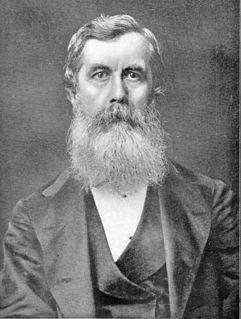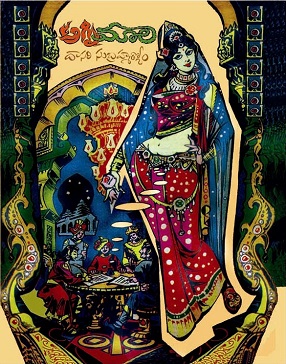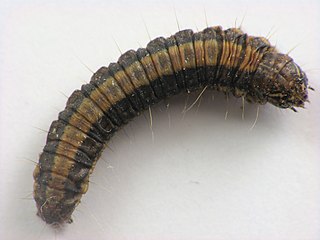
On the Origin of Species, published on 24 November 1859, is a work of scientific literature by Charles Darwin that is considered to be the foundation of evolutionary biology. Darwin's book introduced the scientific theory that populations evolve over the course of generations through a process of natural selection. The book presented a body of evidence that the diversity of life arose by common descent through a branching pattern of evolution. Darwin included evidence that he had collected on the Beagle expedition in the 1830s and his subsequent findings from research, correspondence, and experimentation.
Baron Brabazon of Tara, of Sandwich in the County of Kent, is a title in the Peerage of the United Kingdom. It was created on 27 April 1942 for the aviation pioneer and Conservative politician John Moore-Brabazon. Moore-Brabazon was a descendant through a female line of The 7th Earl of Meath. His father, Major John Arthur Henry Moore, had assumed the additional surname of Brabazon in 1866 by Royal Licence. As of 2017 the title is held by the first Baron's grandson, the third Baron, who succeeded his father in 1974. He is also a Conservative politician and one of the ninety elected hereditary peers that remain in the House of Lords after the passing of the House of Lords Act 1999.
Veranus Alva Moore was a U.S. bacteriologist and pathologist.

In Hinduism, Jambavana also known as Jambavanta is the divine-king of bears, created by the god Brahma to assist the avatar Rama in his struggle against the Lanka king Ravana. Jambavanta is an Asian black bear or sloth bear in Indian epic tradition, though he is also described as a monkey in other scriptures. Jambavana was present at the churning of the ocean and is supposed to have circled Vamana seven times when he was acquiring the three worlds from Mahabali.

Charles Robert Darwin was an English naturalist, geologist and biologist, best known for his contributions to the science of evolution. His proposition that all species of life have descended over time from common ancestors is now widely accepted, and considered a foundational concept in science. In a joint publication with Alfred Russel Wallace, he introduced his scientific theory that this branching pattern of evolution resulted from a process that he called natural selection, in which the struggle for existence has a similar effect to the artificial selection involved in selective breeding. Darwin has been described as one of the most influential figures in human history, and he was honoured by burial in Westminster Abbey.

Spilomelinae is a very species-rich subfamily of the lepidopteran family Crambidae, the crambid snout moths. With 4,132 described species in 340 genera worldwide, it is the most speciose group among pyraloids.

Hypena is a genus of moths in the family Erebidae. It was first described by Franz von Paula Schrank in 1802. These non-migratory moths overwinter as pupae and almost never come to bait as adults.

Omiodes is a moth genus in the family Crambidae. Several species are endemic to Hawaii.

Vinayaka Chaviti is a 1957 Telugu-language Hindu mythological film, produced by K. Gopala Rao under the Aswaraja Pictures banner and directed by Samudrala Sr. It stars N. T. Rama Rao and Jamuna and music composed by Ghantasala. The story is of Syamantakopakhyanam, annually read during the Ganesh Chathurthi festival day celebrations of Lord Vinayaka. The film was dubbed into Tamil as Vinayaga Chathurthi and was released in 1959 and later into Hindi in 1973 as Ganesh Chaturti

Agylla is a genus of moths in the subfamily Arctiinae. The genus was erected by Francis Walker in 1854.

Macrobrochis is a genus of moths in the subfamily Arctiinae first described by Gottlieb August Wilhelm Herrich-Schäffer in 1855.

Pycnarmon is a genus of moths of the family Crambidae described by Julius Lederer in 1863.

Patania is a genus of moths of the family Crambidae described by Frederic Moore in 1888.

Frederic Moore FZS was a British entomologist. He was also an illustrator and produced six volumes of Lepidoptera Indica and a catalogue of the birds in the collection of the East India Company.

Agnimala is a 1975 Telugu language novel by Indian author Dasari Subrahmanyam. It was serialised in the magazine Yuva, and was published as a book in 2011.

The Epipaschiinae are a subfamily of snout moths. Almost 600 species are known today, which are found mainly in the tropics and subtropics. Some occur in temperate regions, but the subfamily is apparently completely absent from Europe, at least as native species. A few Epipaschiinae are crop pests that may occasionally become economically significant.

The 1859 Alabama gubernatorial election took place on August 1, 1859, in order to elect the Governor of Alabama. Democrat Andrew B. Moore won his second term as Governor.

Margaroniini is a tribe of the species-rich subfamily Spilomelinae in the pyraloid moth family Crambidae. The tribe was erected by Charles Swinhoe and Everard Charles Cotes in 1889.















